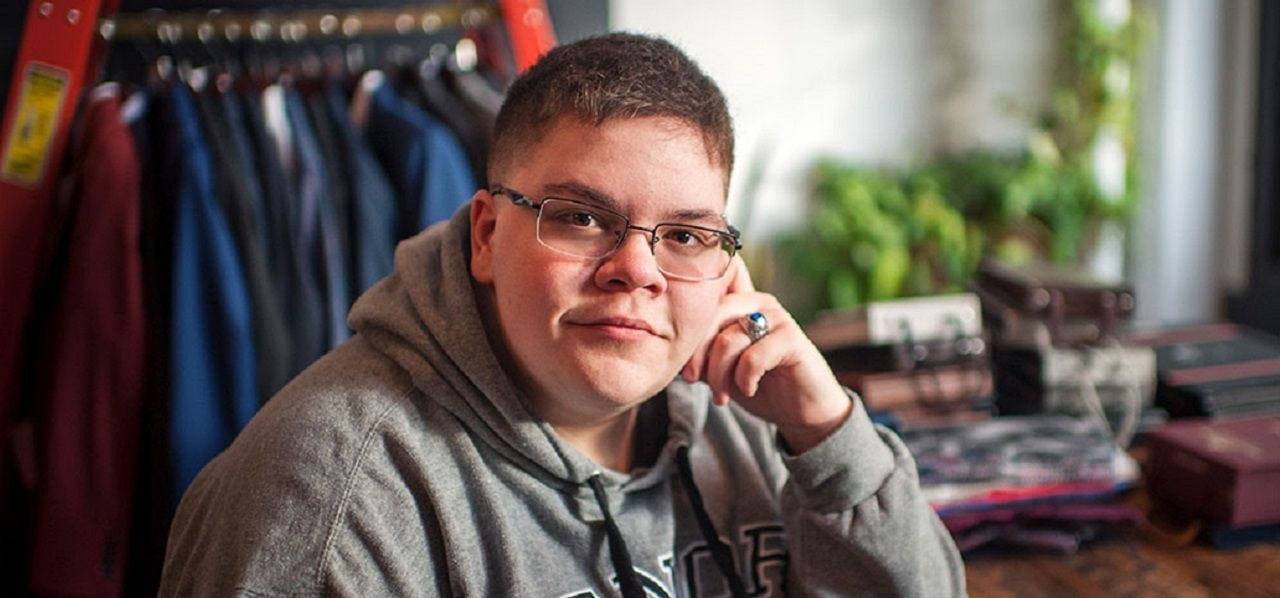The slippery-slope fallacy fallacy
Why claims that one move is likely to precipitate another often aren’t actually scaremongering, and indeed aren’t really fallacies
You have probably heard of “slippery-slope arguments”—a term used in informal logic to describe opposition to some limited meaure on the grounds that it will start a chain of events that leads to much larger, and obviously undesirable, change. In this issue I’m going to look at why claims that such arguments are “slippery-slope fallacies”—that they fail because no detailed, convincing evidence has been provided for how this chain of events will play out—are often wrong.
If you are not a subscriber to my weekly newsletter, you might like to sign up for free updates. I hope that in the future you might consider subscribing.
Slippery-slope arguments are often deployed to try to stop new laws allowing something controversial or risky, but only in special circumstances or with strict safeguards. Examples include decriminalising abortion up to a certain point in gestation, or permitting doctors to prescribe lethal drugs to people who are terminally ill. People who oppose the new measure argue that the criteria will inevitably be relaxed over time and the end result will be a situation that would never have been acceptable, had it not come about piecemeal. Supporters, for their part, argue that the restrictions will hold, and that claims to the contrary are fearmongering.
In deciding who is likely to turn out right, one relevant question is how slippery the slope truly is. Another is whether there really is a slope, that is, a feasible path from the summit to the base. And then you have to ask whether it would really be so bad to slip down. Will that first step down the slope make the bottom look more attractive than it did from the summit, meaning that eventually people agree that the attempts to halt partway were unnecessary?
Saying that the slope isn’t truly slippery is the same as saying that you can decide at any stage when you think things have gone far enough and erect a barrier there. That’s the central claim of this Guardian article, published in 2015. The author says, among other things, that
“In point of social and political fact, there is enough friction on the slope to enable us to stop wherever we choose. The invocation of a slippery slope is therefore almost always anti-rational fearmongering. The phrase acts as a little weapon of ready-made false reasoning that the wielder supposes to function as a knockout argument.”
I wonder if the author would say that now. To take just one example post-dating that article, in 2016 Canada legalised doctor-assisted dying for people with terminal illnesses in response to a court case the previous year. Another court case in 2019 led to those restrictions being loosened to include “grievous and irreversible” physical illnesses. A further loosening to take in mental illnesses is temporarily stayed, and due to come in next year.
Already any Canadian with a significant disability will be able to find a doctor to give them life-ending drugs; from next year the depressed and anxious will be able to as well. And cases have come to light of medical staff suggest-selling death to people with costly medical conditions who have expressed no desire to die, including on financial grounds. Even if you think this is a wonderful state of affairs, it is undeniably far beyond anything suggested in public and parliamentary debates about Canada’s first doctor-assisted dying law.
Slippage like this, driven by test cases that poke at weak points in the initial safeguards which then lead to broader, looser laws, seems to happen far more often than acknowledged. Judges decide test cases based on their specific facts. Rulings are then locked in by being written into laws that cover situations that might not have been decided the same way.
Campaigners who use test cases to bring about legal change know this, and choose their test cases to be as sympathetic and plausible as possible. Take the American “bathroom” (toilet) cases, in which trans-identified people in several states have sued schools and other institutions that refused them entry to toilets for the opposite sex. It is no coincidence that the most legally consequential case to date concerned a trans-identified girl.
Gavin Grimm was a female school pupil in Virginia whose school rejected her demand to use the boys’ toilets and changing rooms. With the support of the ACLU, she sued and eventually won (after she had graduated). Grimm passed pretty well as a boy (she was on testosterone and had had her breasts removed), meaning that she would genuinely have been alarming to other users of girls’ facilities, and would not have looked terribly out of place in the boys’. By demanding entry to spaces for the opposite sex, she was taking on extra risk rather than imposing it on others, as a boy demanding entry to girls’ spaces would have been.
Perhaps judges might have been jolted into common sense by a non-passing trans-identified boy demanding access to girls’ facilities. But that is not what was in front of them. Even so, their ruling covers children who don’t look remotely like members of the opposite sex, and boys who want to use girls’ facilities.
Another reason a slope may be slippery is that the restrictions supposed to stop slippage are easy to circumvent. Abortion law in the UK (minus Northern Ireland) is an example. Since 1967 a woman seeking an abortion must find two doctors to attest “in good faith” that “the continuance of the pregnancy would involve risk, greater than if the pregnancy were terminated, of injury to [her] physical or mental health”.
This was intended to restrict abortion to women in desperate circumstances—perhaps desperate enough to seek an illegal abortion, with all the risks those entailed. Lawmakers expected that abortion would remain rare. And yet any woman who wants to end a pregnancy before 24 weeks will easily find two doctors to sign her off (past 24 weeks there are stricter conditions). Today there are nearly 200,000 abortions a year in the UK; for comparison, the number of live births is a bit over 700,000.
Looked at from the point of view of 1967, this was definitely a slippery slope. And yet abortion is not a politically salient issue in the UK, as it is in the US. Most Britons think the law is about right. Arguably, decriminalising abortion was part of sweeping changes to relations between the sexes; expectations of family size and functioning; and women’s education, employment and autonomy. Those changes were enabled by safe, legal, ready available abortion, and made abortion seem more acceptable in turn. The slope was indeed slippery, but few people would now use that to argue abortion should never have been decriminalised.
Same-sex marriage, like abortion, is both a cause and consequence of changing notions of how society works and how people fit within it. It is part of a long-run move away from regarding marriage as a social institution for the production and protection of children to the “companionate” model, in which spouses are each other’s main sources of affection, friendship and sexual gratification. By allowing same-sex couples to marry, states reinforced the companionate model, and relegated the production of children from being the reason marriage even exists to an optional add-on.
How slippery is this slope? I don’t think we’re going to see people gaining the right to marry dogs or inanimate objects, as some on the American Christian Right have claimed. The barriers between species, and between animate and inanimate subjects, are clear lines and should be easy enough to hold. But I do think we’re going to start to see legal cases arguing that the benefits of marriage, including not just companionship but preferential rules for inheritance and taxation, should be extended to, say, siblings who settle together for life, or to groups larger than two.
These cases will probably fail at first, but at some point the right case may meet the right judge, and a new precedent will be set and then extended into a general rule. I’m not claiming I know how people will feel about that when they see it up close. I’m merely saying there is a slope, and it is slipperier than was acknowledged by the campaigners who got gay marriage on the statute books.
Another reason slopes can be more slippery than predicted is that the unified “we” that Guardian article imagines will be able to decide to stop at any point on the slope doesn’t exist. Instead, successive lurches downwards may result from actions by several interest groups. One group may propose the initial measure, and ardently believe that the stopping-point it imposes is the right one, and will hold. Then another comes along and uses a different sort of argument, perhaps one which the initiator would never have imagined and vehemently disagrees with, but is powerless to block.
Self-ID into opposite-sex spaces is a case in point. The first step down the slippery slope came in the 1960s and 1970s, when gender clinics started telling their trans-identified male patients to use women’s spaces as part of the “real-life test” required to qualify for hormones and genital surgery. They genuinely thought they were treating a tiny number of people as exceptions, and that there was no risk of a broader erosion of single-sex spaces, since these people were all on a drastic treatment pathway that led to castration.
But this set up the perfect situation for challenges on human-rights grounds. By now several courts, including the European Court of Human Rights, have ruled that making legal gender recognition contingent on genital surgery is a human-rights abuse because it inevitably causes sterility. Many doctors, politicians and ordinary people still think that surgery is the right place to draw the line (to be clear, I don’t—a castrated man is still a man). But that stopping-point, regarded as so obvious by those who started down the slippery slope, could not hold against arguments they never foresaw.
I don’t have a strong sense of how often slippery-slope rebuttals turn out to be nonsense; I’m not even sure how I could get such a sense. But surely this happens sufficiently often that slippery-slope arguments should be taken much more seriously. And so I’d like to make a suggestion: let’s give a name to the reflexive tendency to cry “slippery-slope fallacy” whenever someone foresees that supposedly robust safeguards accompanying a new law will inevitably be relaxed. I propose the “slippery-slope fallacy fallacy”.
If you would like to become a paid subscriber and receive full access to my weekly newsletter, you can sign up here.
In other news, I now have a monthly column in the Critic magazine. My first column has been available in print for a few weeks, but went online only a few days ago—I’ve already filed my second column for the May issue, but that issue hasn’t yet gone to press. It’s lucky I had started this newsletter before the opportunity arose—I had never written columns before, and they’re very different from the tight, opinionated-but-impersonal style of The Economist. I’ll try to remember to post links here when future articles go online.
And on Monday 17th April I spoke to the book club of the Institute for Economic Affairs. I think it was a good conversation, not least because there was someone lined up to disagree with me. I think I came out best from the exchange, but then I would, wouldn’t I? I’d be interested to hear what readers think landed, and what didn’t. (Ignore the first few minutes of the video, about where to find the toilets, which inexplicably wasn’t edited out before the video was uploaded to YouTube.)





